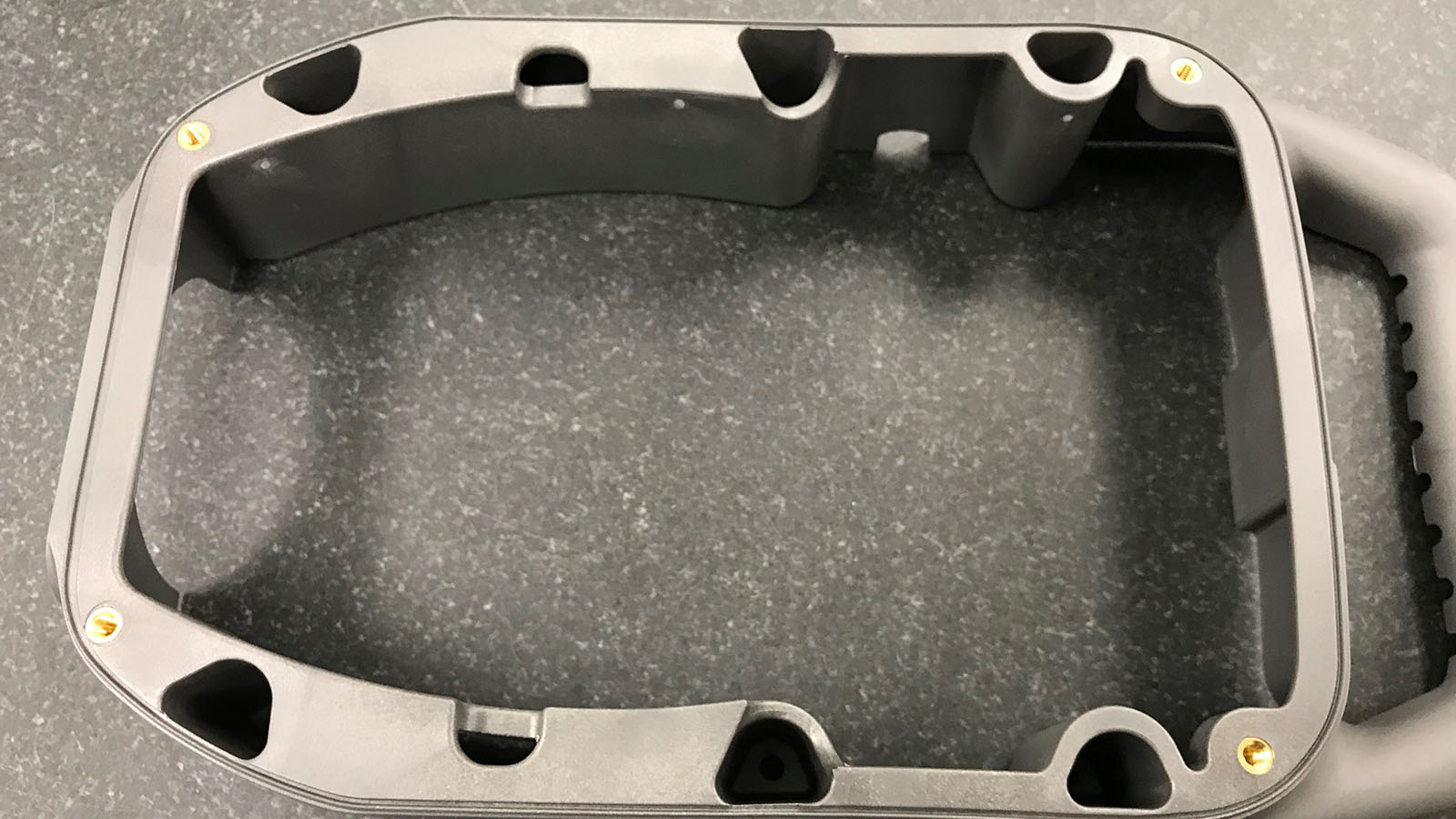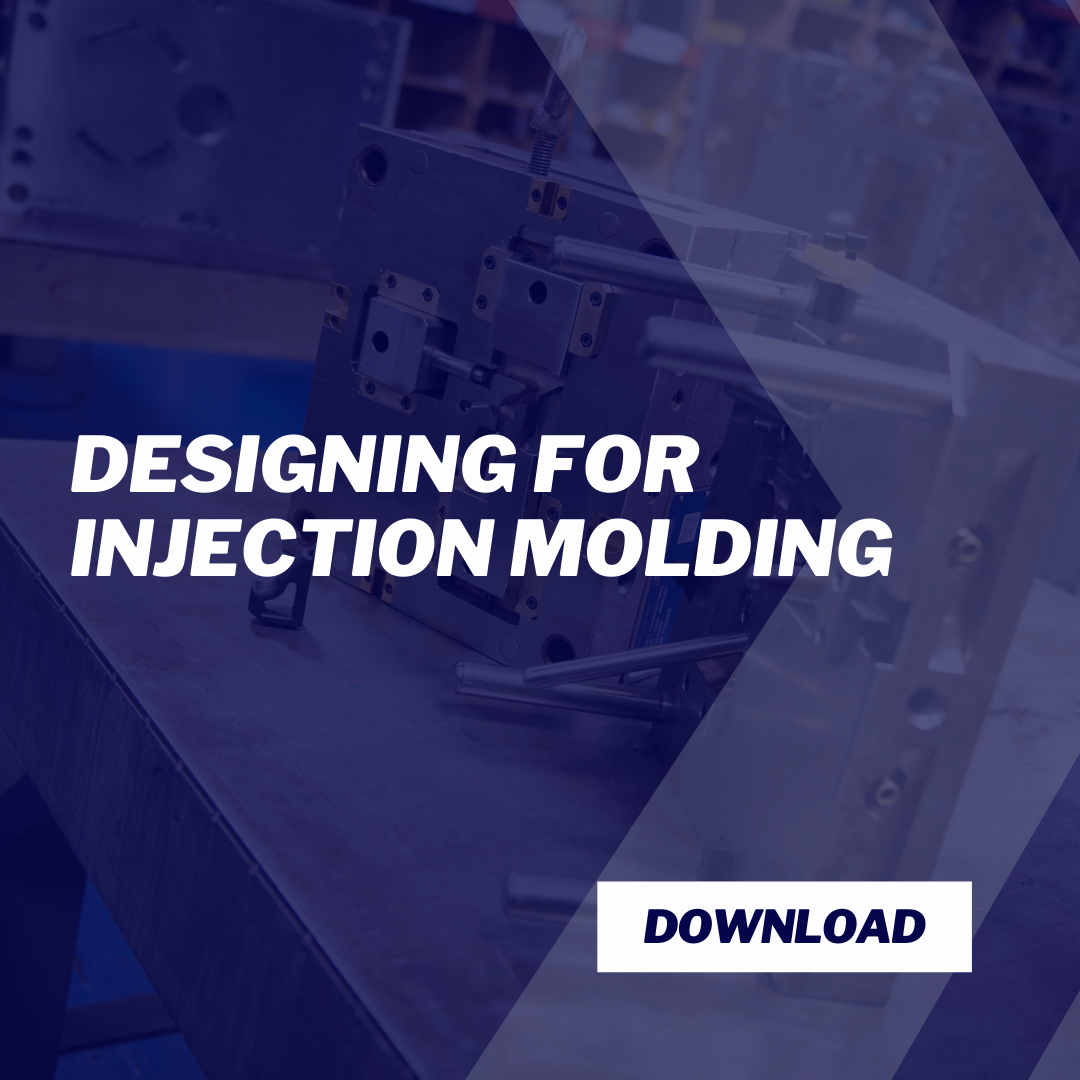INSERT MOLDING
OVERVIEW
Insert molding is an injection molding process used to encapsulate a component in a plastic part. The process consists of two basic steps: First, the component is loaded into the mold before the molding process. Second, as molten plastic is injected into the mold, it takes the shape of the part and locks the component into the plastic.
A common application is the use of a female threaded insert to create a rigid thread in a plastic part. However, like many other injection molding processes, the application possibilities are seemingly endless. Inserts can be just about anything, from alloy threads to electrical contacts. Because of the wide array of potential applications, it’s important to understand the insert molding process, design the part correctly, and consider how the production process works. For an in-depth look at planning a molding project and designing for injection molding, download our ebook below.
Let Basilius assist with your injection molding project. Request a quote today to get started.
What is Insert Molding?
Insert molding is the process of inserting a component into a mold prior to the injection molding process. Note that the injection molding process is still the same, there is just something being molded into the part. Some of the key benefits of using inserts on molded parts include:
- Improved strength
- A strong and reliable attachment point for assemblies (Inserts)
- More cost effective when compared to other inserting processes
- No significant mold changes required

If this part were not insert molded, an operator would need to manually apply each insert to the plastic part after the molding process. The inserts could be pressed, heat staked, or ultrasonically applied to the part. The end result is the same (mostly) as it is with insert molding; however, there are several disadvantages of using the manual method:
- There is the added cost of secondary equipment and fixtures
- Manual labor is required
- The process is difficult to scale with high order quantities
- Plastic can fatigue and melt at the surface leaving noticeable imperfections
- Manual processes are likely not as strong and consistent as insert molding
In addition to the above disadvantages, the other methods also limit the types of components that can be used. For example, if you were adding an electrical connector or other more complicated features, heat staking and pressing might not be viable options. In the next section, we’ll look at the various types of inserts available for insert molding.
Types of Inserts
- Female Threads
- Male Threads
- Dowel Pins
- Electrical Contacts
- Spring-Loaded Clips
Part Design & Other Considerations
- The Insert – The inserts need to be able to withstand the injection molding process (high pressure and high temperatures).
- Insert Location – Since inserts still rely on plastic to hold them in place, you will need to think about the function of the insert and how forces will be applied.
- The Cost – If your part is cost sensitive, you’ll want to consider the cost of the inserts and work with an injection molder to understand the increase in the piece price that insert molding will add.
- The Mold – Inserts need to be held in place during the molding process. Designing molds to hold inserts in place correctly is critical.
- Production – Inserts can be loaded manually by an operator or automatically loaded by robotics. You’ll want to understand production needs and do a cost-benefit analysis to determine which option is best.
Manual Insert Applications
In manual insert loading operations, an operator loads the inserts into the mold during the molding process. Manual loading is common for low-volume applications or when there are several different inserts in one part.
Manual loading is simple and effective for low-volume applications. Since there is a full-time operator, manual loading gives you the option to have detailed part inspections, assembly, packaging, or kitting with little to no added cost. With higher volume projects, however, it may become too costly or inefficient to load inserts manually.
Automatic Insert Applications
Automation equipment can be used to lower the piece price of the part. The cost saving is realized in two ways. First, since there is no longer a full-time operator at the machine, the injection molders operational costs will be reduced. These lower operational costs can then be passed onto the customer. Second, since robotics systems can load inserts into the mold faster than an operator, you can produce more parts per hour leading to lower piece price. Check out this example video of a project at Basilius that uses robotics.
Given that these inserts (in the example above) are difficult to handle and even more difficult to get into a small pin in the right orientation, You can imagine how long it would take a person to load those eight inserts into a mold manually.
When one switches from manual loading to an automatic system, the secondary value of the manual operator is often overlooked. For insert molding jobs, manual operators are able to check part quality and insert placement, while maintaining quality control. However, automatic systems can also handle quality control. In the above video, magnetic sensors check to ensure that the inserts have been properly molded into the part. Furthermore, integrated vision systems can be used to maintain consistent quality standards.
Insert Molding vs Overmolding
Insert molding is just one of the processes used to mold plastic around a non-plastic item. Perhaps you are wondering how insert molding differs from overmolding. In simple terms, the key difference is that overmolding is typically molding a rubber-like plastic over top of another plastic component, while insert molding involves molding plastic around a non-plastic component. Overmolding is used for creating features like ergonomic grips, bump stops, or aesthetics features.


